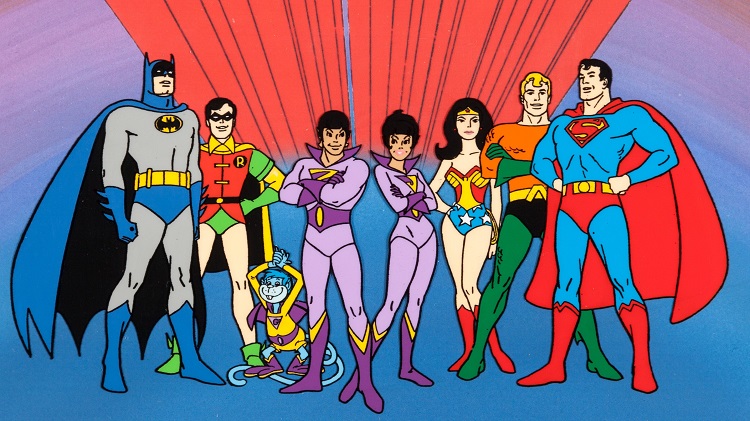
Although programming for children on Saturday mornings had existed since the launch of television in the late 1940s, it wasn’t until 1966 that each of the three existing networks — ABC, CBS, and NBC — launched an official all-morning-long block of kids’ shows.
The most popular programs from the late ’60s, including Scooby-Doo, Archie, and H.R. Pufnstuf continued to air into the ’70s and spawned many spinoffs and imitators, usually crafted by the same studios that produced the originals. And of course, stalwarts like Bugs Bunny and The Flintstones continued to be a regular presence. By the end of the ’70s, one of the worst things to happen to Saturday mornings in the ’60s was undone, but I’ll get to that in a bit.
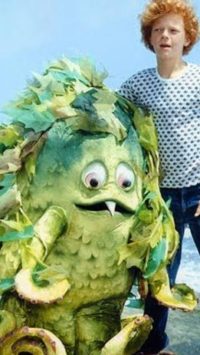
The creators of NBC’s live-action H.R. Pufnstuf, brothers Sid and Marty Krofft went on to create similar puppet-y hits in the ’70s like The Bugaloos (1970), Lidsville (1971), Sigmund and the Sea Monsters (1973-75), Land of the Lost (1974-76), The Lost Saucer (1975), Electra Woman and Dyna Girl (1976), and Wonderbug (1976-78), plus the anthology The Krofft Supershow (1976-1978). Though some of these were only produced for a single season, they were often rerun for years afterward. Some of the segments from The Krofft Supershow subsequently aired as stand-alone programs.
And some of the Krofft shows were rebooted in new forms. Most recently, a new version of Sigmund and the Sea Monsters starring David Arquette was released on Amazon Prime Video in 2017.
While the Kroffts may have produced the most live-action Saturday morning programs, they weren’t alone.
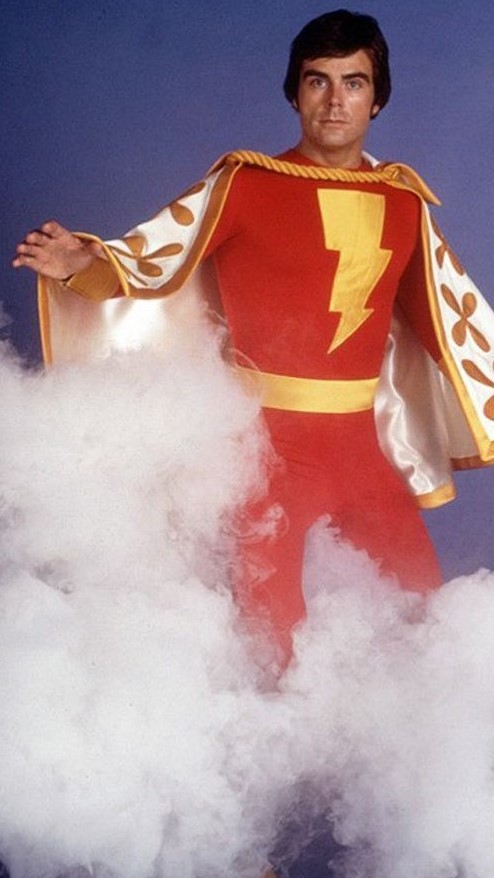
Filmation crafted the series, Shazam!, based on the classic comic book character, a.k.a. teen Billy Batson. Original episodes aired from 1974-76, but reruns continued after that. It also spawned the direct spinoff, Isis (also known as The Secrets of Isis). Among Filmation’s other live-action offerings were The Ghost Busters, Space Academy, its spin-off Jason of Star Command, and Ark II.
Back in the world of animation, on CBS, Filmation’s The Archie Show, inspired by Archie Comics, had become a massive mainstream hit, scoring primetime ratings on Saturday mornings, partly fueled by Top 40 radio hits like the #1 “Sugar Sugar.” In 1969, the show was expanded to 60 minutes and dubbed The Archie Comedy Hour, and included shorts starring fellow Archie Comics character Sabrina the Teenage Witch, who was later given her own series titled Sabrina and the Groovy Ghoulies.
Something similar happened more recently with the live-action Riverdale leading to the creation of Chilling Adventures of Sabrina. The final Archie ‘toon, The New Archie and Sabrina Hour, aired during the 1977-78 season.
Another Archie Comics property, Josie and the Pussycats was also featured in a Saturday morning cartoon but was produced by Hanna-Barbera, not Filmation. However, like Archie and Sabrina, it aired on CBS. It premiered in 1970 and was retooled as Josie and the Pussycats in Outer Space in 1972. The regular versions of Josie McCoy and her friends guest-starred in an episode of The New Scooby-Doo Movies. Speaking of Scooby…

Scooby-Doo, Where Are You? was perhaps the most influential Saturday cartoon in history. It was produced by Hanna-Barbera and aired on CBS, beginning in 1969. In 1972, the format was revamped into The New Scooby-Doo Movies, an hour-long show which featured the Mystery Inc. gang teaming up with real-life celebrities, characters from popular TV shows and movies, and other cartoon characters. Scooby-Doo ran and reran on CBS until 1976 when the property shifted over to ABC, where some iteration of Scooby aired until 1991.
On ABC, Scooby-Doo spawned several new shows including Dynomutt, Dog Wonder, Captain Caveman and the Teen Angels, and the epic mashup Scooby’s All-Star Laff-A-Lympics, a Battle of the Network Stars-style athletic competition that brought together various Hanna-Barbera characters past and present.

To this day, fans of a certain age fondly remember Dynomutt, Dog Wonder, Captain Caveman and the Teen Angels, and Laff-A-Lympics. In fact, Dynomutt, Blue Falcon, Captain Caveman, and Dee Dee Skyes of the Teen Angels appeared in last year’s feature film SCOOB!.
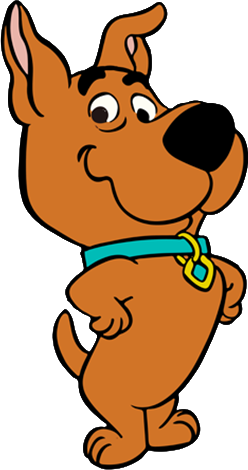
Unfortunately, luck ran out by the end of the 1970s, when HB introduced one of the most hated cartoon characters of all time. In 1979, ABC unveiled the final version of the Scooby cartoon of the ’70s, named Scooby-Doo and Scrappy-Doo, and as you can tell by the title, this is the incarnation that introduced Scooby’s pesky nephew, Scrappy-Doo.
However, despite what folks may think these days, Scrappy was not an immediate flop. In fact, Scooby-Doo‘s ratings had been on the decline, and Scrappy’s introduction helped boost them! Scrappy co-starred in every season of Scooby-Doo until 1988’s A Pup Named Scooby-Doo. So despite Scrappy’s notoriety these days, he was actually a hit with kids at the time!
Elsewhere, the ’70s saw a boom in cartoons based on real people or live-action shows including The Addams Family, The Brady Kids, The Harlem Globetrotters, The Jackson 5ive, Jeanie, My Favorite Martians, The New Adventures of Gilligan, The Oddball Couple, The Osmonds, The Partridge Family, and Star Trek.
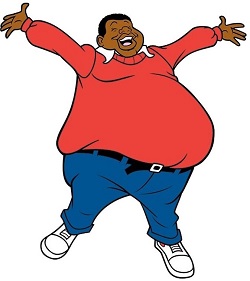
Perhaps the most groundbreaking cartoon of the era was CBS’ Fat Albert and the Cosby Kids, created by Bill Cosby and produced by Filmation. The show was the first animated series to feature a mostly-Black cast. Not only was that innovative, but the stories were educational and taught valuable morals to viewers. These morals were spelled out at the end of each episode by Cosby himself in live-action. Sadly, time has since made that tragically ironic.
Fat Albert and the Cosby Kids debuted on CBS in 1972 and ran until 1985, although new episodes were not produced each season.
And though not a show itself, one of the most indelible memories of children’s TV from the 1970s was Schoolhouse Rock!, created by advertising executive David McCall and aired on ABC beginning in 1973. These were short animated musical interludes played between full-length programs.
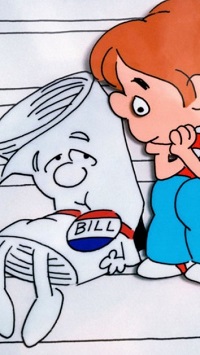
McCall came up with the idea after his son was unable to memorize his multiplication tables despite being able to effortlessly learn the lyrics to popular songs. Using his advertising background, McCall wrote catchy, poppy tunes that concealed real educational information.
The Schoolhouse Rock! shorts originally focused on multiplication, with subsequent seasons teaching grammar, American history, and science. The basic Schoolhouse Rock! concept has been revived a few times in the ensuing decades, most recently in 2009 for the series Earth Rock.
Having aired on ABC, the rights to Schoolhouse Rock! now belong to Disney.
But not everything in the ’70s was about education. Stepping back a bit, from 1966 until spring 1968, superheroes ruled Saturday mornings. But pressure from parents groups like Action for Children’s Television (ACT) drove the networks to abandon such violent content in favor of more comedic stylings. Shows like Scooby-Doo were able to walk the tightrope by balancing out any elements that were intense or scary with humor.
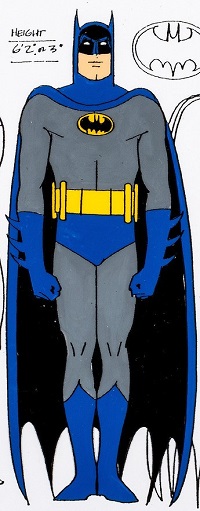
In 1972, when CBS and Hanna-Barbera were retooling Scooby-Doo into The New Scooby-Doo Movies, they took a chance and decided to test the waters by including Batman and Robin in two episodes. Those appearances were so popular that HB developed an all-new superhero series for Saturday mornings.
The result was Superfriends, based on DC Comics’ Justice League of America. To avoid the scrutiny of ACT and the FCC, the show nixed the conflict and fisticuffs of ’60s superhero shows. The heroes didn’t typically battle supervillains, and any foes they did encounter (usually misguided scientists), they never struck. Instead, the heroes used their might to rescue others and prevent disasters. The cases were solved by their teenage sidekicks, Marvin and Wendy, along with their pet Wonder Dog. Overall, the show captured the post-60s eco-friendly, sunny attitude of the early ’70s.
Superfriends aired on ABC in 1973 but was not renewed for a second season. However, the ratings for reruns in subsequent years outperformed those of some newer shows, so ABC decided to revive the show.
When The All-New Superfriends Hour debuted in 1977, enough time had passed that this new incarnation actually did embrace action a bit more than the first season. The characters still did not strike each other — villains had to be restrained — but at least there WERE villains! And these were actual power-hungry would-be conquerors and not well-meaning scientists.
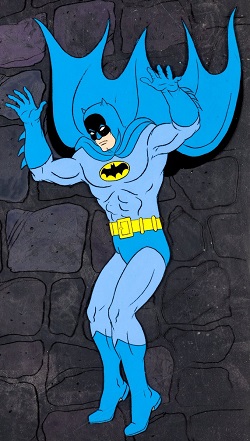
Like Scooby-Doo, Superfriends became a staple of Saturday mornings and its success ushered in a new era of action-adventure cartoons (although some were still heavy on the laughs) including the previously mentioned Dynomutt, Dog Wonder, as well as Fangface, The New Fantastic Four, Fred and Barney Meet The Thing, The Godzilla Power Hour (featuring Jana of the Jungle), The New Adventures of Flash Gordon, The Plastic Man Comedy/Adventure Show, Space Sentinels, Spider-Woman, The Super Globetrotters, and Tarzan, Lord of the Jungle/Tarzan and the Super 7. (It may have helped that Star Wars: A New Hope had opened in 1977, driving the acceptability of action-adventure entertainment for children.)
Batman and Robin also starred in a separate series, The New Adventures of Batman, created by Filmation, which aired on CBS in 1977, concurrently with Superfriends. The New Adventures was broadcast on its own, as well as paired with Tarzan, and combined as part of the anthology Tarzan and the Super 7. In fact, years after its original airing on CBS, the latter was rebranded as Batman and the Super 7 and run again on NBC.
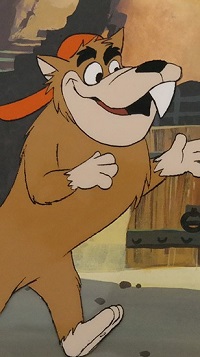
While Krofft and Filmation provided the bulk of live-action programming for Saturday mornings in the ’70s, the animation mostly hailed from Filmation and Hanna-Barbera, with a few smaller studios making notable contributions. However, toward the tail end of the decade, a new name emerged — Ruby-Spears Productions. Joe Ruby and Ken Spears had previously worked at Hanna-Barbera and co-created Scooby-Doo. In 1977, they launched their own studio, with their first project being 1978’s werewolf action-comedy Fangface, which borrowed Scooby-Doo‘s concept of a group of teens solving mysteries with a comedic animalistic mascot. However, in this case, the mascot was one of them!
In fact, the lead character, lanky Sherman “Fangs” Fangsworth was like Shaggy and Scooby combined into one! Whenever Sherman saw the moon (or even just a picture of it), he would turn into a bumbling yet powerful werewolf. He would revert back if he saw the sun (or, once again, a picture of it).
Ruby-Spears followed up Fangface in 1979 with The Plastic Man Comedy/Adventure Show, based on the DC Comics character. The Ruby-Spears library is now owned by Warner Brothers, which also owns Hanna-Barbera, so it’s all one big happy family!
So from the sunshine days of the post-Woodstock era to the more action-driven post-Star Wars universe, that was Saturday mornings in the 1970s in a nutshell. Are you old enough to remember these shows? Or did you catch them in reruns, on home video, or streaming in the decades since? Feel free to leave a comment below and make sure to come back next weekend for a look at the 1980s!



